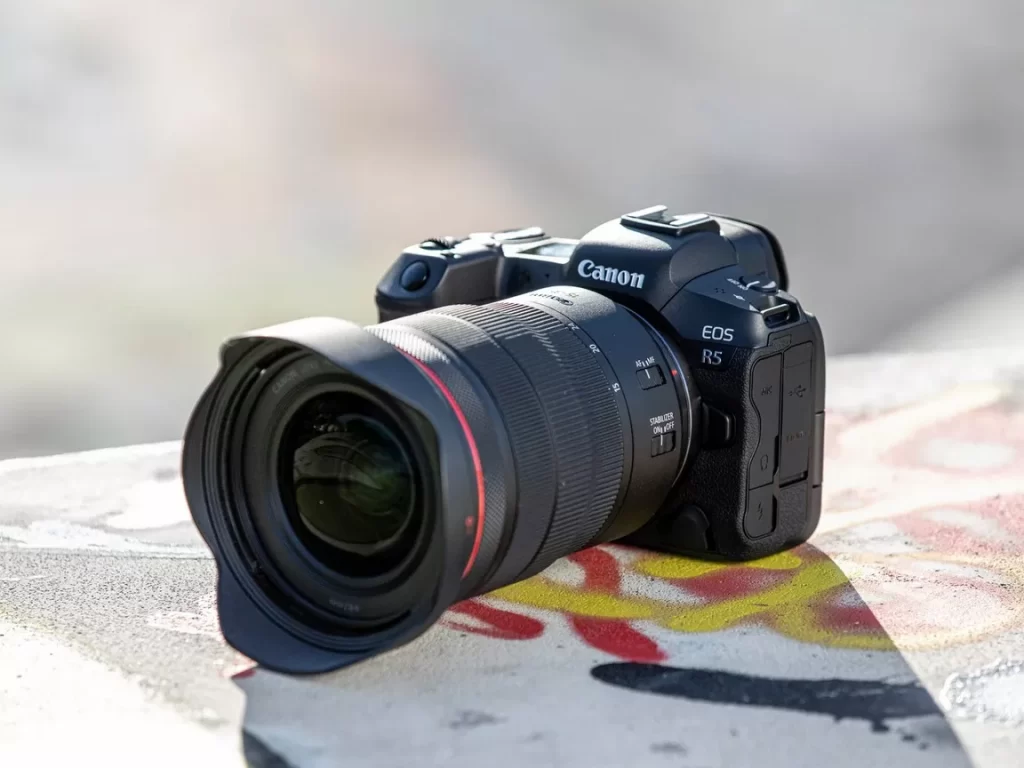Mirrorless cameras use a different technology than traditional DSLR cameras which rely on a mirror to reflect light into an optical viewfinder. Instead, mirrorless cameras use a digital viewfinder or LCD screen to display the image. It relies on an electronic sensor to capture the image.

Inside a mirrorless camera, there is a digital sensor that captures the image, which can either be a full-frame, APS-C, or micro four-thirds sensor. The sensor is located directly behind the lens, and it captures the light that passes through the lens. The sensor sends the captured image data to a processor. It applies the camera’s settings (such as white balance, exposure, and color tone) to the image. The processed image is then saved to a memory card.
Elements of mirrorless camera
Choosing the best mirrorless camera depends on your specific needs, preferences, and budget. Here are some factors to consider when choosing a mirrorless camera.

Sensor size
The sensor size determines the image quality and low-light performance of the camera. Larger sensors generally produce better image quality, but they also increase the size and cost of the camera.
Megapixels
Megapixels determine the resolution of the image, and higher megapixel counts can result in more detailed images. However, megapixels are not the only factor that determines image quality, and higher megapixel counts can also lead to larger file sizes and slower processing times.
Lens selection
One of the benefits of mirrorless cameras is that they often have a wider selection of lenses than traditional DSLR cameras. Consider the availability and cost of lenses for the camera you are considering, and whether they meet your specific needs and preferences.
Size and weight
One of the main advantages of mirrorless cameras is their small size and light weight. Consider the size and weight of the camera and how important portability is for your intended use.
Video capabilities
Mirrorless cameras are often favored by videographers for their ability to shoot high-quality video. Consider the video capabilities of the camera, including resolution, frame rate, and recording format.
Image stabilization
Many mirrorless cameras have in-body image stabilization, which can help reduce camera shake and produce sharper images. Consider whether the camera you are considering has image stabilization and how important it is for your intended use.
User interface
Consider the user interface of the camera, including the layout and accessibility of controls and menus, and whether it is easy to use and navigate.
Price
Finally, consider the price of the camera and whether it fits within your budget. Keep in mind that the cost of lenses and accessories can also add up quickly.
Mirrorless camera focus system
Mirrorless cameras use a variety of autofocus technologies to achieve accurate focus. Some cameras use contrast detection autofocus, which compares the contrast of different parts of the image to determine focus. Other cameras use phase detection autofocus, which uses a separate autofocus sensor to detect the distance to the subject.

Finally, mirrorless cameras use electronic shutters to capture the image, rather than a mechanical shutter like in DSLRs. Electronic shutters have the advantage of being completely silent and can offer faster shutter speeds, but they can also be susceptible to rolling shutter distortion when shooting fast-moving subjects. The best mirrorless camera buying decision for you will depend on your specific needs and preferences. You may need to try out different models before making a decision.
You may like to read the article based on D-SLR vs. Mirrorless camera.
Acknowledgement: Pictures taken from internet

Good information. Thnx